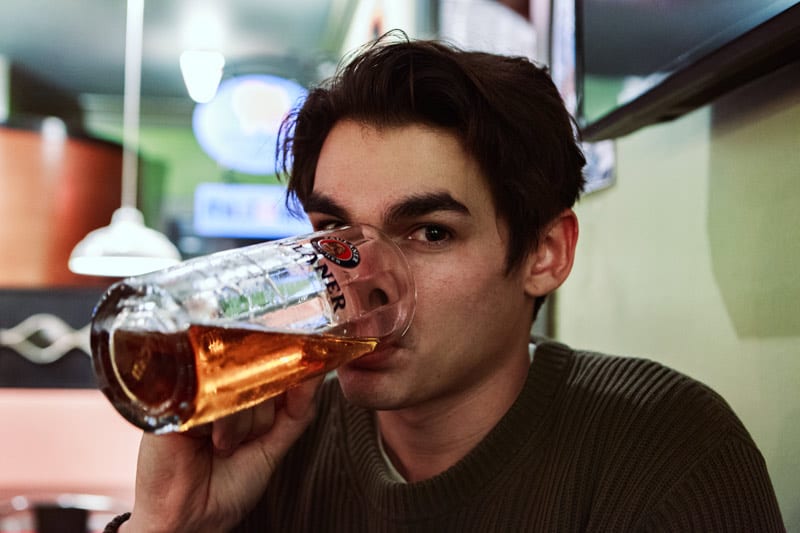Bipolar disorder is a serious and persistent mental health disorder in which a person experiences unusual changes in mood. Other characteristics of this disorder are changes in energy and activity level. It can cause risky suicidal behavior and can affect social life and academic and work performance. Thirty to fifty percent of people with bipolar disorder (bipolar disorder I and bipolar disorder II) will also experience substance use disorders. Early treatment of co-occurring substance use disorders (SUDs) and bipolar disorder together can lead to better outcomes for the patient.
Bipolar Disorder
The Fourth Edition of the Diagnostic and Statistical Manual of Mental Disorders classifies this disorder as a mood disorder along with major depressive disorder.
The Fifth Edition of the manual introduces a new category called “Bipolar and Related Disorders ” for this disorder. The following table illustrates the duration and symptoms of the two types of bipolar disorder manic episodes:
| Type | Duration | Symptoms |
| Mania | At least a week |
|
| Hypomania | At least 4 days |
|
Some people in the manic phase of the illness also experience delusions and hallucinations.
The following table illustrates the prevalence of bipolar disorder in the United States.
| Prevalence of Bipolar Disorder | Percentage |
| Lifetime | 1 to 4% |
| 12-month | 1 to 2.6% |
- 50% of people with this disorder have a history of childhood trauma.
- 33% of people with this disorder have a history of multiple forms of abuse.
Types of Bipolar Disorder
Based on the frequency and severity of depressive and manic episodes, there are two types of bipolar disorder:
- Bipolar Disorder I
- Bipolar Disorder II
The following table indicates the two types of bipolar disorder and their diagnostic criteria.
| Bipolar Disorder Type | Diagnostic Criteria |
| Bipolar Disorder I |
|
| Bipolar Disorder II |
|
In 5 to 15% of cases, a person with bipolar disorder II experiences manic episodes. It should not be seen as less severe than bipolar disorder I. Both types of this disorder are serious and persistent mental illnesses. The manic episodes of bipolar disorder I are more severe, while the depressive episodes of bipolar II tend to be more severe. Both conditions can be disabling.
Bipolar Disorder and Co-occurring SUDs (Substance Use Disorders)
The risk of SUDs is higher in individuals with bipolar disorder as compared to individuals with most other mental health disorders. The following table illustrates the percentage of patients with bipolar disorder and SUDs co-occurrence for a specific duration:
| Duration | Percentage |
| Lifetime | 21.7 to 59% |
| 12-month | 5 to 25% |
Alcohol is the most common substance used by people with bipolar disorder. These individuals are least likely to adhere and respond to treatment. Hospitalization is necessary in many of these cases. An individual with co-occurring alcohol use disorder is also more likely to attempt suicide.
Bipolar Disorder Screening
Because of overlapping symptoms with some other conditions, the screening and diagnosis of bipolar disorder are often challenging. The substance use treatment professional should keep in mind that the tools used for the screening of bipolar disorder or any other mental disorder are not intended for diagnosis. If the results of a bipolar disorder screening are positive, the patient should be referred to a licensed behavioral health professional.
The CIDI-Based Screening Scale for Bipolar Spectrum Disorders is the most reliable bipolar disorder screening tool. It includes important questions related to individual symptoms and symptom clusters. This tool can successfully identify between 67% and 96% cases of bipolar disorder.
Bipolar Treatment
Diagnosis and treatment of bipolar disorder should be provided by a licensed behavioral health professional. Depending on the symptoms, needs and preferences, bipolar treatment can be complex. The treatment can be changed depending on the way the patient responds. During the treatment, the patient receives a range of both psychosocial and pharmacological therapies.
Pharmacological therapy includes:
- Mood stabilizers
- Atypical antipsychotics
- Antidepressants
Psychosocial therapy includes:
- Cognitive–behavioral therapy
- Family-focused therapy
- Interpersonal and social rhythm therapy (psychoeducation, social rhythm therapy and interpersonal psychotherapy)
These treatments can improve life satisfaction, relationship functioning, and overall functioning of a person with bipolar disorder.
Co-Occurring Bipolar Disorder and SUDs Treatment
Substance use disorders are frequently progressive, chronic disorders. These disorders can also make bipolar disorder treatments less effective. Early intervention can help a patient with co-occurring SUDs and bipolar disorder. Co-occurring SUDs and bipolar treatment also includes both psychosocial and pharmacological therapies.
Pharmacological Therapy
Medications used for bipolar disorder are also used for co-occurring bipolar disorder and SUDs treatment. Divalproex sodium is an anticonvulsant mood stabilizer used in the treatment of manic episodes. When given with lithium, this medication can also reduce alcohol consumption.
Quetiapine is an atypical antipsychotic used in bipolar disorder treatment. The efficacy of quetiapine for alcohol use has been studied and it is found that it can decrease alcohol consumption and cravings.
Psychosocial Therapy
There are different treatment approaches in psychosocial therapy for co-occurring bipolar disorder and substance use disorders. These approaches include sequential, parallel and integrated treatment.
Sequential Treatment
In sequential treatment, the therapist addresses the more serious disorder first. Once the serious disorder is controlled, the therapist addresses the other disorder.
Parallel Treatment
The therapist addresses the major and other conditions at the same time but in different settings.
Integrated Treatment
In this treatment, the therapist or team of therapists treat the whole person. This includes mental health disorders and SUDs treatment and medical and medication issues. The cognitive–behavioral relapse prevention model is an example of integrated treatment that includes individualized interpersonal therapy, psychoeducational materials, and group sessions and mutual help groups.
If you or someone you know experiences mental health issues, it is important to seek help from a qualified professional. Our Resource Specialist can help you find expert mental health resources to recover in your community. Contact us now for more information on this free service to our users.
Author Bio – Sakshi Joshi is a copywriter with a creative persona. She loves talking about taboos. Mental health is one such taboo that people don’t talk about. She herself suffered from depression for a long time, so she adores writing and creating awareness in the masses about mental health and depression. Writing is healing for her. She believes happiness spreads with kindness.
https://www.linkedin.com/in/sakshi-joshi-2a1446119/
https://www.instagram.com/the_chic_who_scrawls/?hl=en
Photo by Hayes Potter on Unsplash
The opinions and views expressed in this guest blog do not necessarily reflect those of www.rtor.org or its sponsor, Laurel House, Inc. The author and www.rtor.org have no affiliations with any products or services mentioned in this article or linked to herein.
Recommended for You
- How a Health Cleanse Can Reset Your Body and Mind - April 16, 2025
- The Truth about Relapse in Addiction Recovery - April 14, 2025
- The Power of Peer Support in Mental Health Recovery - April 10, 2025





